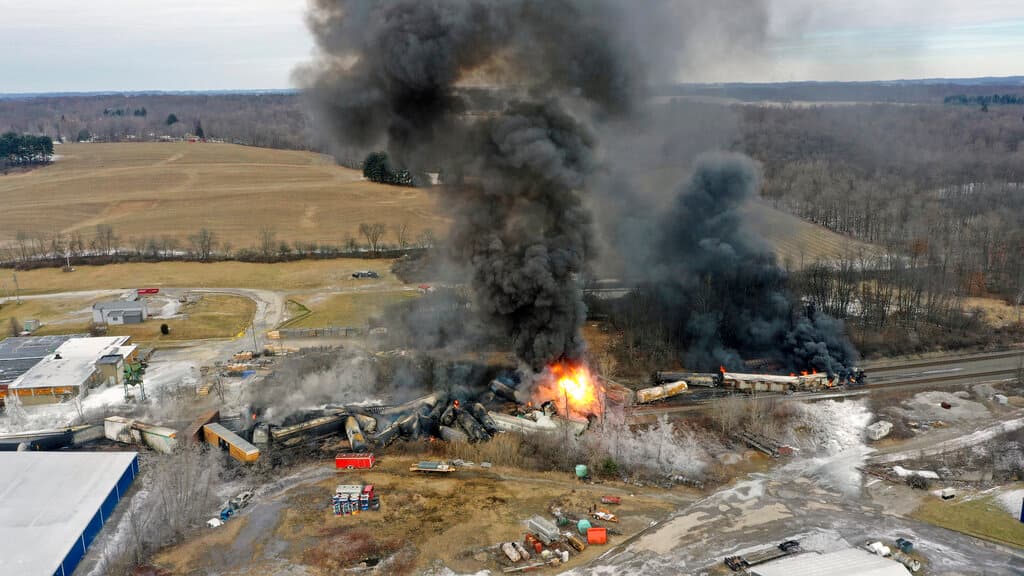East Palestine Is Wary of Government — and Norfolk Southern Railway
Everywhere you go in this Ohio village and across the state line in Darlington, residents are beyond frustrated. They are deeply concerned about their health, not just for now but in the future, and they don’t trust the Environmental Protection Agency.

EAST PALESTINE, Ohio — Rick Tsai is standing knee-deep in the briskly flowing Lesley Run creek, a mile downstream of where the massive derailment happened in this Columbiana County village. He’s wearing thick blue rubber gloves, heavy boots and a respirator, and he is intent on seeing if the chemicals detected earlier are still visibly present.
Please check your email.
A verification code has been sent to
Didn't get a code? Click to resend.
To continue reading, please select:
Enter your email to read for FREE
Get 1 FREE article
Join the Sun for a PENNY A DAY
$0.01/day for 60 days
Cancel anytime
100% ad free experience
Unlimited article and commenting access
Full annual dues ($120) billed after 60 days

